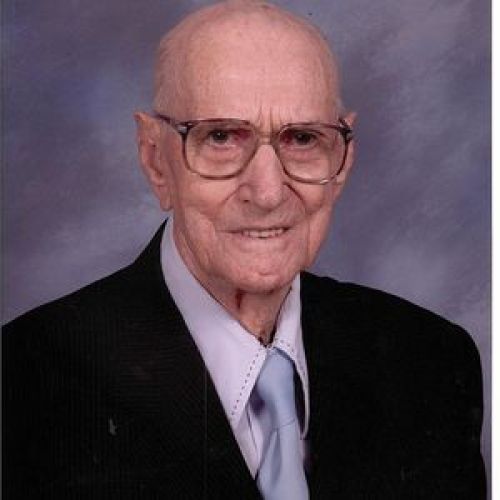
Willie W. Bonvillain
November 20, 2013
Patterson still alive after hard-fought victory
November 27, 2013Sometimes elements of a community’s future progress dreams aren’t quite ready for prime time.
And that could be the case with the highly-touted but quickly dashed suggestion by Terrebonne Parish’s former economic development chief that a big deal is brewing concerning liquid natural gas.
That LNG production and related terminals are a vibrant economic component of the energy industry is clear.
A new American Petroleum Institute study predicts “significant U.S. job gains, manufacturing growth, and robust economic activity associated with future exports of LNG.”
That’s according to API Vice President for Regulatory and Economic Policy Kyle Isakower.
“The export of liquefied natural gas – or LNG — represents one of the most promising economic opportunities of the shale revolution. These exports will significantly reduce our trade deficit, increase government revenues, grow the economy, and support millions of U.S. jobs in engineering, manufacturing, construction, and facility operations,” said Isakower. He estimates that $10 to $31 billion per state to the economies of natural gas-producing states, such as Texas, Louisiana, and Pennsylvania, by 2035.
“In terms of employment, natural gas-producing states could see employment gains as high as 60,000 to 155,000 jobs in 2035,” Isakower said in a conference call with reporters. “That is because the long-term impact of LNG exports will mean stronger, more reliable U.S. production of fuel for both domestic consumption and export.”
A news release former Terrebonne Economic Development Authority Director Steve Vassallo issued as a swan song on the eve of his departure makes clear an attempt at local riding of the LNG train. But it has been roundly criticized as promoting a concept lacking not only local wings but local legs.
A deep look at the announcement that a “major deal” concerning one or more LNG loading or terminal sites, including one outside TEDA’s area of geographic responsibility, registered a big “no sale” with local officials, and a deeper look at the number of pending – and future – LNG deals nationwide as well as those already dashed explains some of the reasons why.
An independent assessment of the gas industry’s current and future directions shows an already crowded field, and a lack of local infrastructure amenities favorable to LNG berths.
A Nov. 6 TEDA release notes in its first paragraph that “the final week of Steve Vassallo’s tenure as chief executive officer of TEDA has resulted in a project for Terrebonne and Lafourche parishes potentially worth billions.”
The release goes on to state that two Chinese investors “with whom Vassallo has forged alliances via his sister-city initiative between Terrebonne Parish and Weihai City, China, have pledged US$250 million each for a liquid natural gas (LNG) project and related spin-offs at the Port of Terrebonne and Port Fourchon … Vassallo said this initial $500 million investment could lead to a project worth at least US$4 billion, much of which he expects to be funded by American joint venture partners.”
The release, repeated word for word on global shipping Web sites, contains further statements that might seem more suited for inclusion in Vassallo’s resume as he explores future employment possibilities than any type of policy statement for Terrebonne, according to some critics.
At best, policymakers have branded it premature and incomplete, at worst misleading.
Vassallo’s departure as TEDA director – initiated by his resignation upon learning that Terrebonne Parish President Michel Claudet, displeased with TEDA for still-vague reasons – was hastened by an early but expected TEDA board-initiated ouster. Vassallo had offered to continue working till Dec. 24, but the board mandated Nov. 6, with Vassallo to be compensated through the end of his contract term.
If, as some critics posit, the news release was a case of Vassallo demonstrating just how big the marbles he was taking home truly were, the gesture failed.
“Setting up a project for LNG requires something more than a parish,” notes Terrebonne Parish Councilman Danny Babin. “We can’t as a parish offer the incentives. This requires the state and the federal government to be on board.”
Port of Terrebonne Director Steve Rabalais notes the draft of LNG vessels is deeper than the approach to his port, and that what dredging might be required throws up prohibitive barriers to LNG consideration.
Port Fourchon Director Chett Chiasson said the timing of the TEDA statement was way off, and that to his knowledge there is a discussion of the possibilities, but nothing approaching project state. His comments echoed some of Babin’s points.
“This is really not something that is in our hands, it’s not something TEDA or Steve Vassallo or Port Fourchon could even approve,” said Chiasson, who also lacks appropriate depths for LNG consideration.
Chinese investors did have some LNG discussions, and even pointed out land they considered appropriate near Port Fourchon for an LNG operation. Release of the TEDA statement, in Chiasson’s estimation, was a “cowardly thing to do.”
“But we have no access to the land they looked at,” Chiasson said. “And a Chinese company cannot just do business on its own in the US.”
Port Fourchon, Chiasson said, routinely hosts visitors from all over the world, giving tours and presentations.
Vassallo, reached at his home in Oxford, Miss., deflected the criticism. He recalls that talk of LNG emerged during a trip he took with community leaders to Panama, where they explored expanded shipping potentials.
“A subsequent trip back to Panama resulted in knowledge of significant energy importing needs for Panama going forward,” Vassallo said. “That was positive, regarding exporting of energy. It takes two years just to go through the permitting process. But I was excited because before the delegation arrived they had significant investments pledged to the project. It was a real project and it is a real project. The due diligence phase is a long, drawn out process, it doesn’t happen overnight. But that innocent relationship we formed with Weihai was the catalyst that precipitated all things that have happened since that time.”
The API – while not commenting on any of Terrebonne’s future plans – has made clear that the field for LNG, although lucrative, is also crowded.
“Some of those facilities are existing some are import facilities and they could be refurbished and modified to be export facilities and some are new locations not been built yet but have been proposed,” said API analyst Zach Zikanek, who produced a graphic showing LNG spots already under consideration on the Gulf coast. “The permit is the first step in that process,” Zikanek explained. “There is clearly a global demand and these facilities would meet some of that demand with US natural gas . Some would be brand new.”
Lake Charles and Placquemines Parish are among the spots from which permit applications have already been filed.
The expectation, experts say, is that permits already applied for will get US Department of Energy approval.
What follows in other jurisdictions that may have an interest, analysts said, would depend on continued demand.
And some industry analysts note that what progress gets made could well result in a bubble of sorts.
Right now US natural gas is cheap, and so much of it can be shipped from US ports before the cost of LNG elsewhere is met.
There are other considerations, however, including the potential for pushback from environmental groups and regulators.
Communities and industry components are already fighting battles against expansion related to LNG, particularly on the north Atlantic and Pacific coasts. More battles are possible.
“It depends and it is a community by community and plant by plant and proposal by proposal thing,” said Karen Wood of the Boston-based Conservation Law Foundation. “We have been successful in blocking new LNG plants in a few states in recent year, in Maine, Rhode Island and Massachusetts.”
Despite the negative potentials, Vassallo maintains that there is a future in LNG production for Terrebonne and nearby communities, and that his parting message for the parish is on point.
“People can form opinions but I know what transpired and I am happy that there has been interest,” Vassallo said. “There will always be critics. It is all positive.”
Harvey Gulf International Marine plans to install a 540,000-gallon LNG-fueling facility at Port Fourchon. The rollout will coincide with the company’s deployment of six LNG-powered offshore supply vessels. Local officials hope Terrebonne and Lafourche can develop the infrastructure to export the alternative, cleaner-burning fuel.












